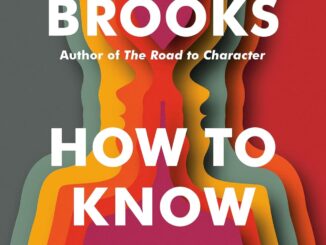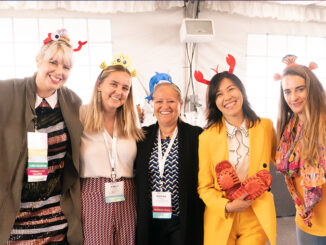
By Len Ferman, Managing Director, Ferman Innovation, Adjunct Professor of Innovation, University of North Florida, Jacksonville, Florida, len.ferman@unf.edu
Editor’s Note
Len Ferman donated his expertise and time to design and run a workshop with QRCA members to brainstorm how the qualitative industry can build and reinforce its importance today and into the future. This article is a reflection from the workshop.– Mark Wheeler, Business Matters Feature Editor, QRCA VIEWS
For I dip’t into the future, far as human eye could see, saw the vision of the world, and all the wonder that would be
From the poem “Locksley Hall” by Alfred, Lord Tennyson, published in 1842
OVER 180 YEARS AGO, at a time when the communication and transportation industries were at the beginning of technological revolutions that would forever alter society, Alfred, Lord Tennyson wrote the stanza above as part of his celebrated poem.
As a brainstorming facilitator and qualitative researcher, I’ve always been enamored with dipping into the future and pondering positive change.
Over the past year, however, I have seen a decline in demand for my services. With 35 years of experience, I was accustomed to there being an ebb and flow to this business. However, there was something unnerving about this ebb.
Coming on the heels of the introduction of ChatGPT and the continued growth of quantitative research survey platforms and data science methods, I have a sense that traditional qualitative research may be losing its place as an essential part of the market research toolkit.
I started asking other quallies what they were experiencing, and I heard some similar concerns. This was enough validation for me that new game plans or business models need to be considered.
To consider courses of action to help qualitative research as an industry, I partnered with the QRCA VIEWS magazine to run a brainstorming session with eight QRCA members with extensive qualitative experience and two client-side participants who lead insights teams at Fortune 500 companies.
In a two-hour session in early January, I engaged this group in several customized creative exercises designed to get them thinking about novel ways the qualitative research industry can reinforce and secure our place in business decision-making.
In this article, I will explain how I developed and ran the brainstorming session. I will also share the specific ideas the group produced and my insights and takeaways from this first step to address how we can maintain qualitative research as a viable industry that provides superior value to clients.

Methodology
Craft an Objective Statement
The goal of the objective statement was to frame the issue in a way that would put the group on track to solve it in the future. We wanted the group to try to imagine a future—imagining what technologies might be in place.
I crafted the following objective statement in collaboration with Business Matters Editor Mark Wheeler and Managing Editor Pamela Batzel:
“How can qualitative researchers increase their value to clients over the next 3–15 years?”
Why 3–15 years? I wanted the group to think about big breakthrough ideas. This meant trying to get them to think into the distant future, not just about what we could do today.
Identify Participants for the Session
Wheeler and I contacted numerous qualitative researchers and a few client-side buyers of qualitative research. With an outstanding response, we were able to quickly put together a group with a wide variety of backgrounds and specialties. Everyone graciously volunteered their time and was fully engaged throughout the entire session.
Prepare the Exercises
I always have likened facilitating a brainstorming session to planning a wedding. Every minute of the session must be thought out, with backup plans on standby. I want to keep participants constantly entertained; that leads to engagement, and engagement leads to successful sessions.
I have an array of creative exercises I select from when preparing for a session. I always have a few extras to use if the ones I put in the agenda just don’t work with a particular group.
Prework is also valuable. This busy group of professionals was not incented, so I chose a simple thought exercise. I asked each person to think about the biggest problems they foresee over the next five years in the qualitative research industry. For the client-side participants, I asked them to think about their biggest need areas in gaining in-depth insights from customers.

Run the Brainstorming Workshop
A key first step is setting the right tone and expectations with a brainstorming group. Everyone needs to understand that the session is a risk-free zone to share ideas, no matter how crazy they sound. Einstein reportedly said, “If at first the idea is not absurd, then there is no hope for it,” meaning that the greatest ideas often sound absurd at first. I share this with groups at the outset.
The heart of the session is the creative exercises. This is where the synergies of ideation take place. Creative exercises are idea-generation templates; they provide a framework for developing ideas. Using an assortment of creative exercises keeps the group fresh and engaged. Each one usually sparks different types of ideas.
For this session, I picked four creative exercises, which are described in Figure 1.
I have repeatedly found that when I have put in the work to customize a set of creative exercises for a group, they work well to draw out a steady stream of ideas from participants. If I ever feel the energy level of the group start to wane, I move on to the next creative exercise. More often, I need to watch the clock and cut off an exercise so we can move to the next one, as I feel it’s important to ensure each exercise gets an equal amount of time, similar to how I manage the participants to ensure they each have about an equal amount of airtime in sharing ideas.
Figure 1—CREATIVE EXERCISES
- PICK YOUR PROBLEM
The group chooses one problem from the list of problems participants identified in the prework (i.e., the biggest problems they foresee over the next five years in qualitative research or, from client-side participants, the biggest need areas in gaining in-depth insights from customers). From there, the group proposes solutions. This is a very simple, straightforward exercise that is useful to conduct early in the session to help get participants warmed up and allow the use of the prework. - CREATIVE CONNECTIONS
This exercise leverages analogous thinking to generate ideas based on how other organizations have solved similar problems. Initially, the group picks a “creative connector”—that is, a separate industry, company, or even persona. Next, the group looks at a list of characteristics of the creative connector. Finally, they think about analogies based on the characteristics that they can use to generate ideas for the ideation objective. This is a powerful creative exercise that has been used to develop some of the greatest ideas in history, such as the printing press. The group chose cruise ships and then Disney World as their creative connectors. As a group, we then reviewed the characteristics of these two creative connectors. Finally, we thought about how we could apply these characteristics to solve for our ideation objective (a secure, successful future for the qualitative research industry). - FUTURE PATH
I presented a vision of the future 15 years from now and asked the group to think about how we got there. The vision should be such that the participant’s thinking is transported into the future. The vision should be consistent with the innovation objective and provide a brief description of what life is like in the future. During the exercise, the facilitator would focus on the parts of the vision relevant to the innovation objective and ask the group how we got to this point. They would also ask what specific products, services, programs, or processes were implemented over the past 15 years that enabled us to reach this vision. I developed this exercise a few years ago and have started using it in all my sessions to ensure participants are thinking far into the future. It solves for a problem I’ve increasingly noticed in the past five years, in which groups tend to think too short term and thus focus on smaller, incremental ideas as opposed to big, breakthrough ideas. - AI–J (ARTIFICIAL IDEATION JUMP-STARTER)
This is an exercise I developed recently to leverage ChatGPT. I pose a query in ChatGPT that is related to our innovation objective and share the results with the group. The group uses the results as a starting point to craft ideas. ChatGPT ideas are often too simplistic, too general, or off-strategy. But the group can use the ideas to stimulate their own creative thinking and build ideas that fit the innovation objective that they might not have come up with otherwise. In our session, I shared a list of 10 ideas that ChatGPT produced and asked the group to build on those ideas.

Findings
The prework yielded the list of problems in Figure 2. The problems fell into several categories.
- Declining Client Engagement—Clients may lack the time to manage qualitative research or are becoming less interested in traditional qualitative research versus other tools and methodologies.
- Fraudulent Participants—Concerns over the authenticity of respondents and truthfulness in their responses.
- Inability to Keep Up with Technology—Qualitative researchers are challenged in maintaining knowledge and expertise with complementary tools they could be leveraging.
- Declining Participant Engagement—Concerns that younger participants are less interested in participating in qualitative research.
Figure 2—PROBLEMS
- Clients are shunning traditional qualitative as they become enamored with technology to collect and analyze open-ended responses to quantitative surveys.
- Promoting qualitative-only solutions may not provide the predictions and forecasts executives need, resulting in disappointment and reduced use of qualitative methods.
- Synthetic participants will not have the depth of response a real person will have. Synthetic respondents are avatars made from AI. They’re learning what a real person thinks.
- People are promoting qualitative research at a larger scale, raising concerns that qualitative is becoming a mixture of quant and qual, and blurring the definition of qualitative research.
- Digitalization and automation of qualitative research are leading to reduced creativity and collaboration.
- Tools are needed to manage qualitative research at scale, as well as hybrid studies that are a mix of quantitative and qualitative.
- As AI gets better, determine how to identify and prevent fraudulent responses.
- Making qualitative research an appealing thing to do is getting difficult. Gen Z doesn’t like to participate in qualitative research.
- Reporting of qualitative research feels shallow. Clients complain that it doesn’t feel like what they heard in the back room.
- The proliferation of learning tools and technologies has created a lot of noise and distracts from the heart of qualitative, which is to answer questions and solve problems.
- Researchers have a lack of time to research available tools.
- Low client engagement devalues qualitative. In-person research has not come back to pre-COVID levels and is lacking the collaboration that makes it valuable. Bulletin boards are not as interesting for clients and can be all-consuming, thus reducing client engagement.
- Corporate managers are squeezed for time and don’t fully engage with qualitative. No one shows up during fieldwork.
The session produced the ideas listed in Figure 3, as well as several suggestions that were not specific ideas but represented areas of opportunity for further exploration and ideation. The areas of opportunity are listed in Figure 4.
Figure 3—IDEAS
- Movies On Demand
Ask participants to describe an experience they want to have and ask AI to instantly create a short video of that experience. Then have the participants watch the video and discuss if that experience would be ideal or how it would need to be enhanced. - Clone My Brain
Clone my brain and thought patterns to produce better prompts for AI-generated probing. As a qually, I have fine-tuned the ability, through years of listening, to probe effectively. This would solve the problem that AI prompts in research are too vanilla without understanding behind them. This will help to develop the next set of probes and follow-ups. Current AI prompts are too straightforward. - AI Analysis & Coding
Have AI conduct initial levels of analysis and coding, reducing the hard work that doesn’t require brainpower. Then conduct a workshop to ensure the initial analysis is valid. Finally, elevate to a team that builds solutions based on the analysis. - Virtual Reality Sessions
Use virtual reality to bring insights to life. Enable researchers to be “in the same room” with the participant and have the same experience as the participant. - Rebranding
Rebrand qualitative. Drop the message that qualitative is “not projectible.” “Bling up our offering.” Make it more exciting for clients and participants to participate in qual. Rename “focus groups” and “interviews” to something that sounds more fun. - Predictive Qualitative Analytics
Use small sample input in combination with large language models to build predictive analyses. - Learn to Love AI
AI is not going away and will become more customized. Embrace AI solutions for qualitative. - Real-Time Pattern Recognition
Transcribe audio of interviews and focus groups in real time, and conduct pattern recognition on the transcripts. Then, in the same session, query the group about the patterns for confirmation. - Technology Finder
One-click solution to find research tech solutions and vendors to reduce the need to weed through all the new technologies and demonstrate to clients that we’re familiar with new tools. - Qual Retreat
Plan and create time and space for clients and teams to engage together and use behavioral
and emotional psychology methods. Conduct qualitative while you’re on the retreat with clients. - Qual on Tour
Return to the slow approach to qualitative by creating client excitement for going on a qualitative research tour (like a rock band on tour). The moderator is the tour guide (or the band). Elevate qual to be more special so that being in the room or in the home with a participant is special. - Watermarking
Ensure participants are real via “watermarking.” Use digital identification, such as biometrics or 2-factor authentication, to certify that participants are real. - Fraud Reduction
Develop methods that enable you to see and talk to participants to reduce fraud in text-based qualitative. - AI Research Design
Use AI to get recommendations on qualitative tools and technology to use in designing a research project. - Facilities Partners
Partner with organizations that have captive audiences (like cruise ships and airplanes) as places where qualitative research can be conducted. Create dedicated spaces in those facilities for qualitative. Incentives could be based on activities within the space (e.g., snack box on an airplane, drink package on a cruise ship). - Qualitative Package Pricing
Move away from stand-alone project pricing. Package qualitative offerings like a drink package on a cruise ship. “All you can drink” qualitative for the next year. - Cruise Director
Increase client engagement in qualitative by immersing them in the projects with specific roles. Give the client a guiding role like a “cruise director.” Have them assign jobs like taking notes, shooting videos, or directly engaging them in the research. - Collaborative Qual
Leverage qualitative research experts from around the world with different backgrounds and experiences to create better experiences for clients. Collaborate with multiple qual researchers to design and conduct studies, leveraging the broader viewpoints of a diverse group. - Influencers
Have influencers participate in focus groups and market the group as a way to have a conversation with an influencer. Guest respondents become a drawing point to participate in qualitative. Include celebrities. - Rolling Research
Enable quick research for usability testing. Break the notion that qualitative takes a long time. - Anywhere Qual
Conduct qualitative research anywhere there is a queue. Qual researchers can “work down the line” and conduct research with a captive audience. - Timely Insights
Focus on communicating quick, relevant, and timely insights all the time and in timely situations. No more waiting for long decks. Focus on quick insights. - Live Real-Time Panels
Enable live, real-time consumer panels for qualitative research similar to DIY quantitative. Clients can query a panel and, in a couple of hours, have hundreds of qualitative responses. Similar to the gaming industry today, clients can connect to panelists. An immediate group of consumers is available for live half-hour discussions. - Virtual AI Assistants
AI virtual assistants contact consumers, collect qualitative data, and summarize it. Qualitative researchers will “own the tech” and manage the process.
Figure 4—AREAS OF OPPORTUNITY
- IMPROVE PERCEPTION OF QUAL
Look for ways that qualitative is better than quantitative. Example: pricing studies illuminate more info via qual. Identify areas where quant falls short. - STAFFING SOLUTIONS
Help clients with market research staffing shortages that are not enabling them to manage qualitative research. Many clients simply don’t have enough staff on hand to properly engage with qualitative researchers and manage the project on the client side. As a result, they are shunning qualitative. Make qualitative research easier to manage for clients. - CRACK THE ROI CODE
Help clients build the business case for conducting qualitative research. - CONVENIENT QUAL
Make it more convenient for clients to manage qualitative. Reduce the need to be out of the office for a whole week. - EMBRACE TECHNOLOGY
Embrace all the new crazy technologies that can support qualitative research and find ways to use them. - BREAK SILOS
Break the UX, CX, quant, qual silos. Move toward holistic consumer understanding without silos. Help clients generate deeper and broader learning. - IMPROVE TRUST
Improve the balance between consumer trust and technology. Adopt clear ethics and transparency to improve user relationships.
Three categories of ideas dominated the lists that the group generated during the session.
- Leveraging Advanced Technology—The group accepted the inevitability that qualitative researchers must embrace certain opportunities to learn about and deploy cutting-edge technology (most notably, but not limited to, artificial intelligence [AI]), which may yield large leaps in productivity and insight generation.
- Making Qual More Exciting and Engaging—Not all the ideas were based in leveraging technology. Several ideas at their core were about rebranding qualitative research and rethinking methods to engage clients and build excitement and enthusiasm for participating in qualitative research from both the client and respondent perspective. Most of these ideas did not require new technology to be implemented.
- Building a Stronger Business Case for Qual—The group saw opportunities to better demonstrate the financial value of qualitative research to clients.
It is clear from these themes that the long-term focus for qualitative researchers needs to have both a technological component and a human component. New technologies that can deliver breakthrough or game-changing value to researchers and, ultimately, to clients must be considered. Yet, there is still room to innovate with qualitative research methods in nontechnical ways to deliver value to clients and satisfy their core needs for identifying actionable insights.
DISCUSSION
 The group did an outstanding job developing an initial list of ideas in a little more than one hour in which we were in full idea generation mode.
The group did an outstanding job developing an initial list of ideas in a little more than one hour in which we were in full idea generation mode.
It is clear from this small effort that qualitative researchers want to engage in thinking about the future of qualitative research and have some big ideas they are happy to share.
These ideas shouldn’t be judged as complete or comprehensive. They are merely a starting point.
Hopefully, the ideas generated and shared in tables in this article will stimulate additional thinking about how to increase value for clients over the next 3–15 years.
As we face disruptive threats to our industry, it is important for us to collectively discuss and share ideas for how we can evolve our offerings and generate superior value for clients.
NEXT STEPS
Some next steps that could be implemented to move this work forward are:
- Step Back: Take a step back and conduct a more thorough investigation of the current state of qualitative research and client needs for insights.
- Additional Idea Generation: Generate more ideas with a broader group of quallies and clients, building off the work that has been done.
- Evaluate and Narrow Down: Conduct additional exercises to evaluate and reduce the number of ideas to a manageable set for further development.
- Craft Concepts and/or Rapid Prototypes: For each of the reduced sets of ideas, write up concept statements or devise methods to produce early rapid prototypes.
- Market Testing: Test the concepts and/or prototypes with clients and participants to see if they meet a set of test criteria.
- Develop Best Practices: Provide a set of best practices to qualitative research professionals.
This set of steps could be put into action via a QRCA subcommittee. Such a group could formalize a process to work through these initial ideas and identify additional ones.
If we collaborate, we can help nurture new core capabilities that will enhance all our work and improve the perception of qualitative research.
We can all benefit by dipping into the future and envisioning the wonder that can be for qualitative researchers. A high tide raises all ships.




